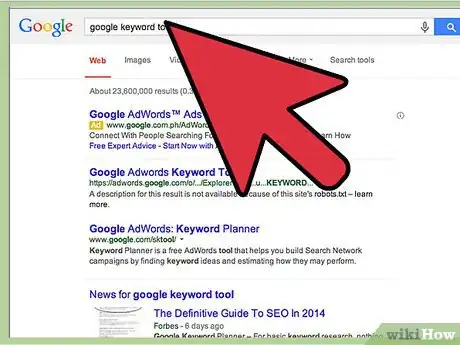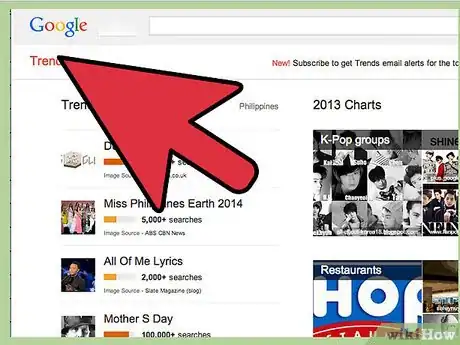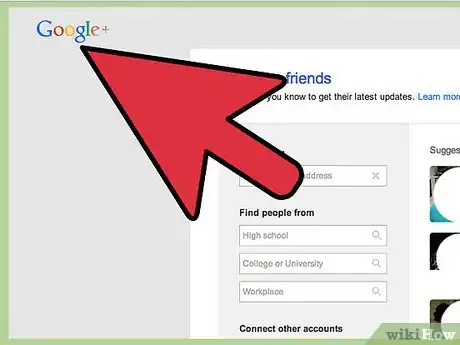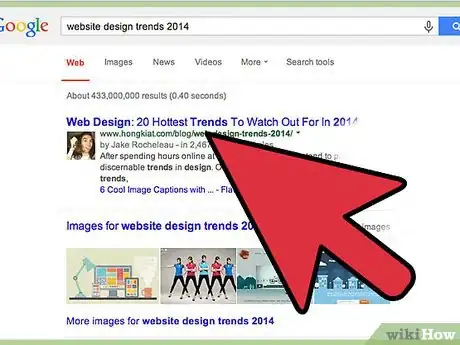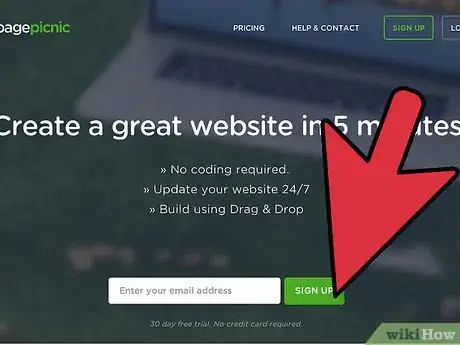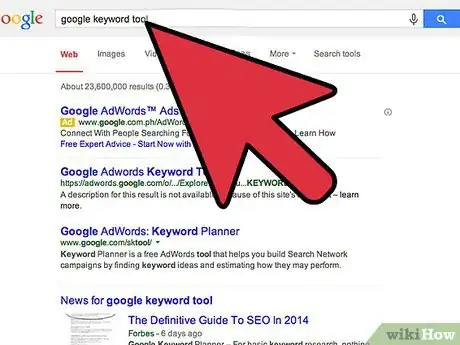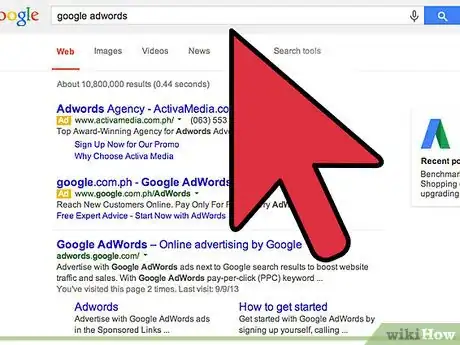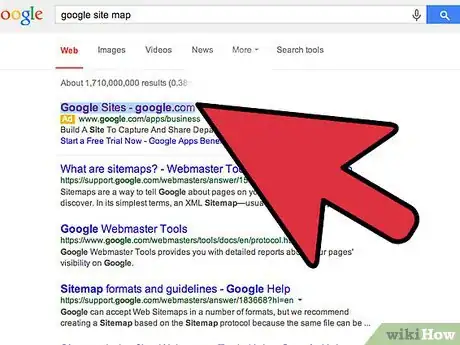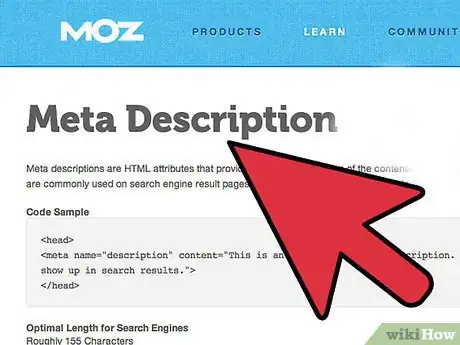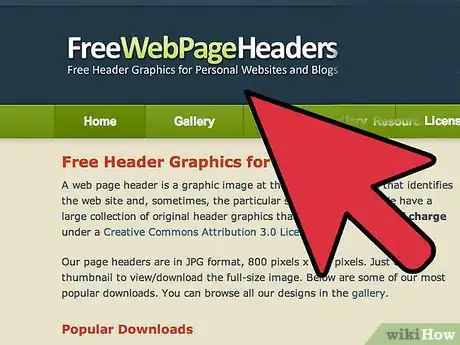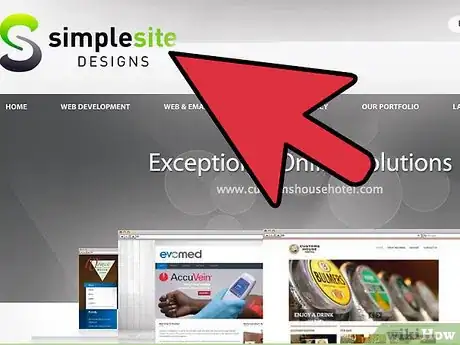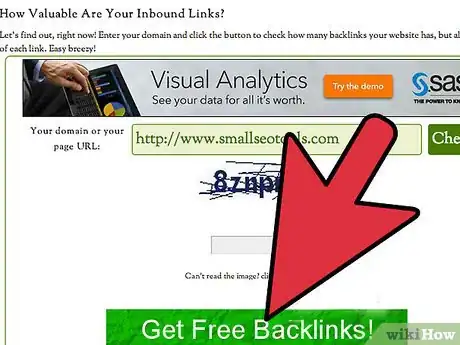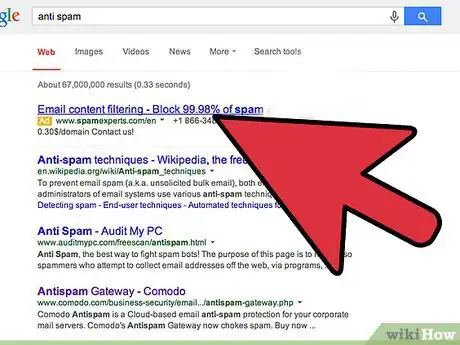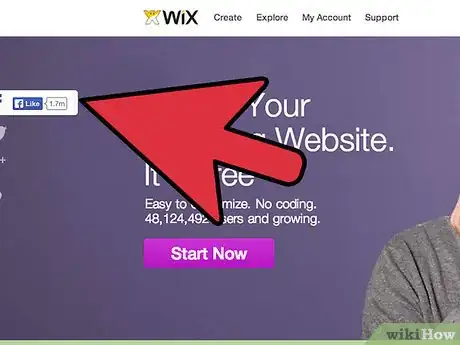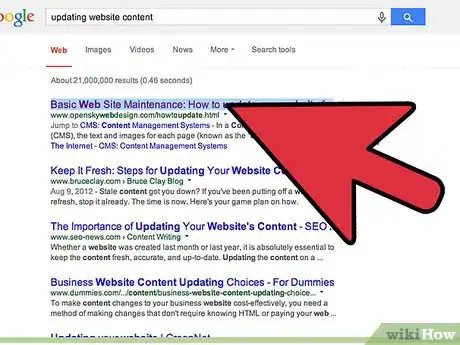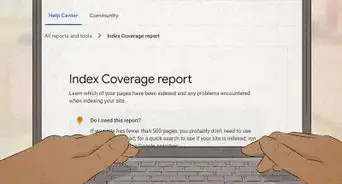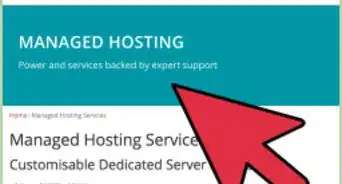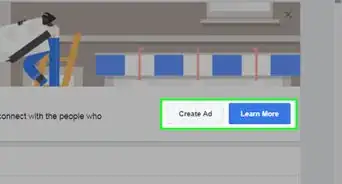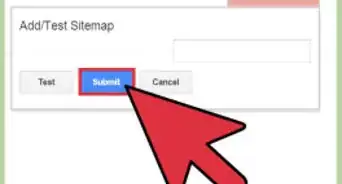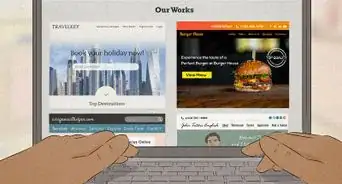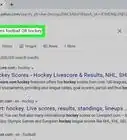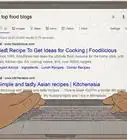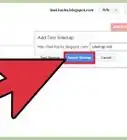This article was co-authored by Melissa Rodriguez. Melissa Rodriguez is a Marketing and Advertising Specialist and the Founder of Social Media Relations out of Los Angeles, California. With over 5 years of experience, she specializes in branding, content production, social media marketing, and public relations. Melissa holds BS degrees in Global Perspectives and Corporate Finance and Accounting from Bentley University.
There are 11 references cited in this article, which can be found at the bottom of the page.
wikiHow marks an article as reader-approved once it receives enough positive feedback. In this case, 100% of readers who voted found the article helpful, earning it our reader-approved status.
This article has been viewed 466,462 times.
Showing up on search engines is one of the most critical ways to increase website traffic and expose your websites content, product or service to people who might be interested in what you are offering. This means that you'll want to practice a little SEO (search engine optimization).
Most of the major search engines utilize an algorithm to determine the rank levels. Even though criteria is different for every engine, all engines share several commonalities. Overall, the most important traits to earn a rank is the type and amount of content provided on a given website, the level of optimization done on the site, and the popularity of the website (link popularity/PageRank).
Steps
Taking Advantage of Google
-
1
-
2Use Trends. Google Trends tells you how searches in a subject change over time. You can use it to predict spikes and slumps as well as to know when you should update and change pages for the season or switch to using different keywords. You can look at and compare several different terms at a time.[3]Advertisement
-
3Make Your Website Mobile Friendly with AMP. According to similar web mobile now drives 56% of all traffic. So mobile search is leading with overall searches and in future, it will grow further more. So AMP pages play a vital role in Google Mobile-First index. It helps to improve usability and convince users to stay longer. AMP speeds up your website's page load time and helps in getting higher mobile rankings.[4]
-
4Add yourself to Google. Google will reward Google Plus users and also businesses which are registered on Google Maps. Take advantage and join Google, as it is the most popular search engine by far.
Creating Your Content
-
1Have quality content. Quality content, in other words lots of original, error-free text organized well on a modern-looking website, is what matters most in terms of SEO that you can control. Hiring a professional website designer can help with the cosmetics and get you taken seriously by your visitors. You'll also want to be sure that you're not misleading visitors, they should be getting what was advertised when they looked at the site's description.
-
2Create original content. You also create quality content by making sure that your content is original. This means that not only should each page of your site have different content than every other page of your site, but it also means that you'll be docked for stealing the content of others. Make your text original! Another important aspect to note with search engine optimization, is that consistency is key when it comes to optimizing a website. Meaning your title, headers, attributes, meta information, should be related to the content on the page with the core target keywords you want to rank for. Google looks for this consistency.[5]
-
3Incorporate appropriate images. Quality images, tagged with good keywords, can also help your rankings with search engines.
-
4Use keywords. Find the most relevant and search keywords that relate to the content you provide and then add those keywords to your site text. Use the word a few times within the page in a way that relates to the rest of the text and is natural.[6] Going over the top with the word-drops or pairing them with content that is irrelevant will get you punished in the rankings, however.
-
5Target niche keywords with low competition. This involves at least a little bit of figuring out what makes your business unique. Maybe you're not just a clothing designer, but you're a geeky clothing designer. Maybe you're not just an auto shop but you're an auto shop in Seattle. Try to use Google Adwords to check how competitive your keywords are before deciding on them. Be sure that the keywords have at least some searches. You will want to try using broader key words too.[7]
-
6Have a site map. Create a site map that tells people where everything is on your site. You will get about a 1% click through rate to your site map. However, it will do wonders for those who know what site maps do, and the Search Engines will like it as well.[8]
Creating Your Code
-
1Choose a good domain name. Keywords as the first word in a domain name will boost your traffic a little. Using a country TLD (top level domain) will boost your rankings locally but hurt you internationally so use that with caution. Avoid dated domain naming techniques like replacing words with numbers. Being a subdomain (like a something.tumblr.com) will also hurt you.[9]
- Keywords in your own subpages and subdomains also help. Your subpages especially should always have a descriptive title.
-
2Use descriptions and Meta tags. Descriptions are a tagged part of your website code which describe the content on the page. Having one at all will help your rankings and having one which contains good keywords will help even more. If your site is using the same tags for all the pages, you are not helping search engines figure out the subject or relevance of your individual pages. Regarding Meta Tags, there are 2 very important fields:[10]
- Title Tag - arguably the most important SEO tag for any website. Google supports approx. 60 characters in the title, while Yahoo allows for up to 110 characters in the title. It is important to target the most critical keywords in the Title. Every page should have a unique Title.
- META Description Tag - These were once important but are no longer. Some engines do display the description defined, while others do not. Some search engines do read the description tag, and do utilize the content found within in the ranking process. Google, MSN and Yahoo give very little weight to no weight for these.
-
3Use headers. Headers are similar to descriptions and the same rules apply: having one at all helps and having one with keywords is even better. Use them!
-
4Keep it simple. Keep the structure, navigation and URL structure of your site simple enough for search engines to follow. Remember that search engines cannot parse your navigation if it's using flash or javascript. So try to stay close to standard HTML when it comes to Navigation. URLs with dynamic parameters (?, &, SIDs) usually do not perform when it comes to search engine rankings.[11]
Making Connections
-
1Create quality backlinks. Backlinks are when another website links to your page. It works in your favor if the website is one that gets more hits than yours does. The best types of "link building" are directory registration, text link advertising, and press release distribution, but you can also build links by doing a link exchange, cross promotion, or guest blogging for a relevant blog.[12] [13]
- Try to offer valuable information or tools so that other people are motivated to link to your site. This will increase the chances of natural backlinks.
-
2Do NOT spam. Spamming comment sections and other website areas (read: anywhere on wikiHow!) will actually make Google and other search engines dock you severely or remove you entirely. Do not spam people to build backlinks for yourself. Search engines will also punish you if your name is attached to spamming complaints or if you operate your website anonymously.
-
3Do that social media thing. Right now, social media share and likes are the activity which is most rewarded by Google and other search engines. especially for subjects that are currently relevant. Create social media accounts with the major sites and update them regularly. Avoid being spammy by not just posting ads: post pictures of customers, events that you attend relating to your business, and other content that your fans might enjoy.[14]
-
4Update your site regularly. Most search engines reward websites which see regular or at least recent updates.
Expert Q&A
-
QuestionWhat is a backlink in SEO?
 Melissa RodriguezMelissa Rodriguez is a Marketing and Advertising Specialist and the Founder of Social Media Relations out of Los Angeles, California. With over 5 years of experience, she specializes in branding, content production, social media marketing, and public relations. Melissa holds BS degrees in Global Perspectives and Corporate Finance and Accounting from Bentley University.
Melissa RodriguezMelissa Rodriguez is a Marketing and Advertising Specialist and the Founder of Social Media Relations out of Los Angeles, California. With over 5 years of experience, she specializes in branding, content production, social media marketing, and public relations. Melissa holds BS degrees in Global Perspectives and Corporate Finance and Accounting from Bentley University.
Marketing & Advertising Specialist A backlink is when a different website links to your site. It's helpful to get backlinks when the main website is bigger than your site.
A backlink is when a different website links to your site. It's helpful to get backlinks when the main website is bigger than your site. -
QuestionHow do I use keywords for SEO?
 Melissa RodriguezMelissa Rodriguez is a Marketing and Advertising Specialist and the Founder of Social Media Relations out of Los Angeles, California. With over 5 years of experience, she specializes in branding, content production, social media marketing, and public relations. Melissa holds BS degrees in Global Perspectives and Corporate Finance and Accounting from Bentley University.
Melissa RodriguezMelissa Rodriguez is a Marketing and Advertising Specialist and the Founder of Social Media Relations out of Los Angeles, California. With over 5 years of experience, she specializes in branding, content production, social media marketing, and public relations. Melissa holds BS degrees in Global Perspectives and Corporate Finance and Accounting from Bentley University.
Marketing & Advertising Specialist Start by identifying the keywords that relate to your content. These words will be relevant and well-searched. Then, incorporate these keywords into your website content multiple times in a way that feels natural.
Start by identifying the keywords that relate to your content. These words will be relevant and well-searched. Then, incorporate these keywords into your website content multiple times in a way that feels natural.
Warnings
- Never participate on any kind of link exchange with other sites which may lead to a ban from search engines⧼thumbs_response⧽
- Don't create duplicate websites.⧼thumbs_response⧽
- Never have hyperlinks like "click here", hyperlinks should always be keywords, long hyperlinks with multiple keywords are even better.⧼thumbs_response⧽
- Never Repeat to much your Keyword with Bold / Emphasis. It makes your article unreadable and hurt user experience.⧼thumbs_response⧽
- If you are going to use freelancers, beware of duplicate content. Always make sure to check the content that you get by searching for the content on Google, Yahoo, and MSN.⧼thumbs_response⧽
- Don't hide content.⧼thumbs_response⧽
- Remember that if you use black-hat SEO techniques, you run the risk of getting penalized by the search engines and having your web site permanently removed from their index.⧼thumbs_response⧽
References
- ↑ Melissa Rodriguez. Marketing & Advertising Specialist. Expert Interview. 23 April 2021.
- ↑ https://backlinko.com/google-keyword-planner
- ↑ https://www.advancedwebranking.com/blog/how-to-use-google-trends/
- ↑ https://marketingland.com/mobile-top-sites-165725
- ↑ https://www.searchenginejournal.com/seo-101/content-important-seo/
- ↑ Melissa Rodriguez. Marketing & Advertising Specialist. Expert Interview. 23 April 2021.
- ↑ https://backlinko.com/google-keyword-planner
- ↑ https://seo-hacker.com/sitemap-effects-seo-tutorial/
- ↑ https://www.searchenginejournal.com/how-to-choose-domain-name/252285/
- ↑ https://www.advancedwebranking.com/blog/meta-tags-important-in-seo/
- ↑ https://www.searchenginejournal.com/url-parameter-handling-seo/290077/
- ↑ Melissa Rodriguez. Marketing & Advertising Specialist. Expert Interview. 23 April 2021.
- ↑ https://www.entrepreneur.com/article/247984
- ↑ http://backlinko.com/google-ranking-factors
About This Article
There are a few main ways you can use search engine optimization to get your website to the top of search results. Add relevant keywords to your site’s text so people can easily find your website. Use each keyword a few times on your page. Don’t forget to add descriptions and metatags, which appear with search results and tell people about your website before they click on it. You should also use a software framework from Google called AMP to optimize your website for mobile users. The majority of traffic now comes through mobile sites and Google prioritizes websites that are optimized for mobile. Remember to update your website regularly, since Google places recently updated websites higher in the search results. For more tips, including how to create backlinks to your website, read on!
